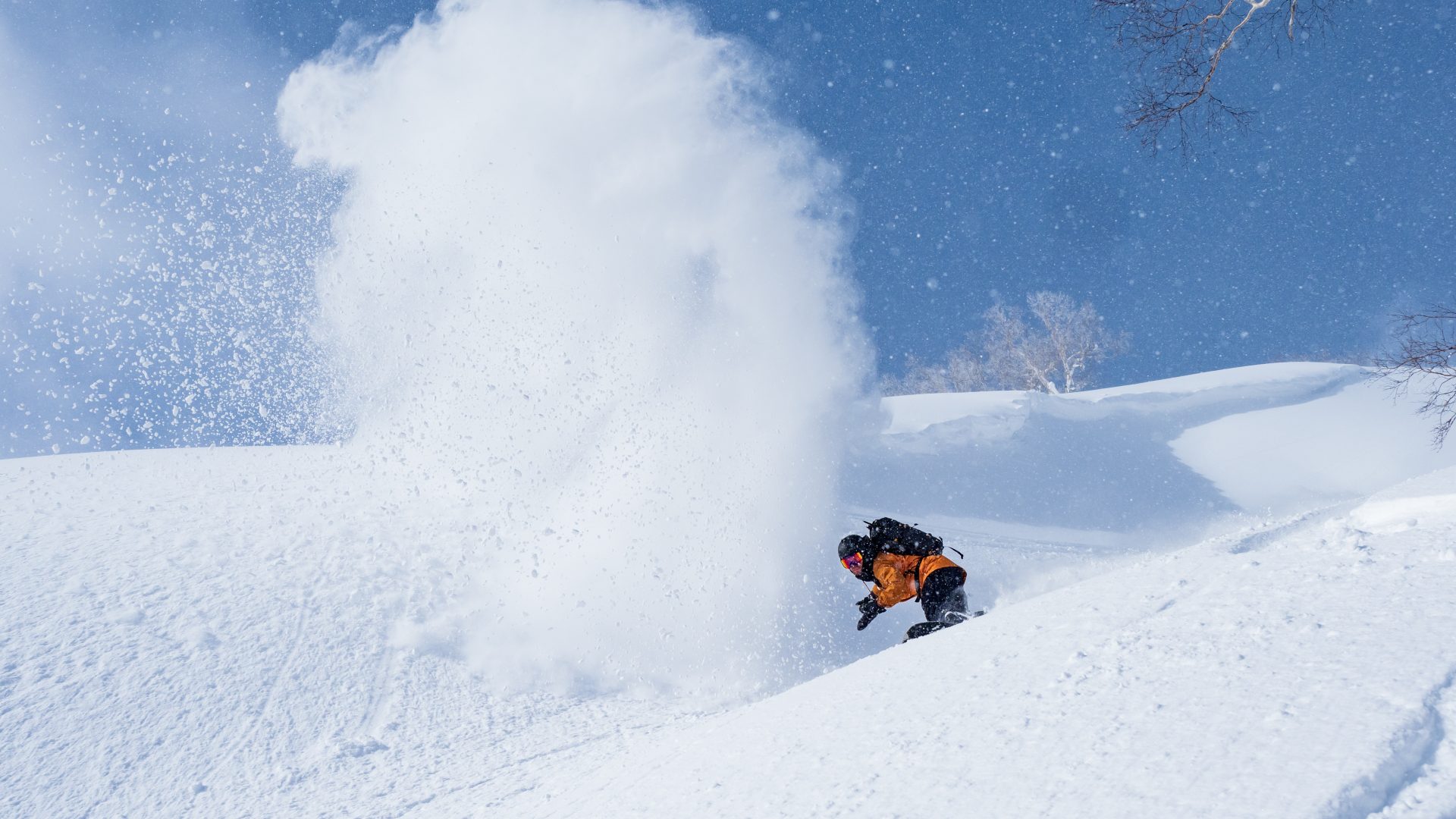Snow Goggles 2024/25 Retail Buyer’s Guide
Brands keep pushing lens technology and pairing it with the latest innovations in fit, to satisfy increasingly educated consumers. By Rocio Enriquez.
Consumers are looking for goggles that will effectively protect their eyes while sitting comfortably and stylishly on their faces. Lens technology innovations take care of the former, while design takes care of the latter. Vision needs to be no less than optimal. Contrast-enhancing technology, photochromic capabilities, and reliable fogging prevention form the trifecta of optical clarity. Quick lens changing systems play an important part in adaptability to varying conditions. Most brands’ bestsellers align with this.
The quality of the lens matters too. All these technical enhancements mean little if the lens breaks under the first impact. To benefit from the protection of a goggle, one must wear it all the time. Good fit and wearing comfort are key. By good fit, we do not only mean good adaptation to the face shape with no pressure points, but good integration with the helmet too. Once the performance side of things is covered, style is the next purchase deciding factor.
There is a trend for modern, sleek designs that look timeless. This is the case of bestsellers such as Airblaster’s Air Goggle, Rossignol’s Spiral Mirror, Head’s Contex and F-Lyt, Oakley’s Flight Deck and Line Miner, or the Void by Out Of. At the same time, there is a particular type of consumer, mostly core freestylers, who are hunting retro looking styles that throw them back to the snowboarding roots in the noughties. Bestsellers of this style are Giro’s Revolt and Salomon’s Sentry.
Anon’s M4 offers versatility. “The M4 allows you to choose either a modern looking toric lens or a retro looking cylindrical lens”, says Benjamin Schwarz. We see larger straps and the possibility to swap them to customise your googles to match your outfit. Growth is expected in goggles that offer comprehensive vision enhancing technologies, with special attention to those that offer premium specs at a reasonable price.
Technology.
Lens technology is the main purchase driver, so it is the aspect of the goggle that attracts more innovation. Every brand offers state of the art vision technology; some of them have developed their own proprietary versions. Poc launches the new Vitrea goggle with their own ClarityTM technology. “Combined with a shallow angle toric lens, the goggle ensures that your all-round vision is always at its sharpest, particularly in your lower periphery”, says Damian Phillips.
Smith expands their ChromaPopTM lens range. Designed to filter specific light wavelengths to enhance contrast and natural colour, it will be available in five more tints. They also offer their BirdsEye VisionTM which creates a lens shape that extends and curves below the sightline, increasing the field of view by 25%. This technology can be found in their new 4D Mag XL, as well as their popular 4D Mag and 4D Mag S.
Salomon also expands their contrast amplifying Sigma lens technology with two new tints, Light Blue and Clear Pink. “The Sigma range is now made up of twelve lenses”, says Delphine Polycarpe. Dragon adds two new colours to their infrared Lumalens range, the Solace IR and Celeste IR.
Red Bull Spect offers eight goggles with their photochromic Chrom X lenses. Sinner adds two more goggles to their range featuring their high contrast Sintrast technology. They add their Sintrast Trans+ lens to their Snowghost goggle, which allows them to offer a high contrast, high clarity photochromic lens CAT1-3 with a full mirror finish at a very good price point. Zeal adds a patented line of lenses called Optimum Polarised Automatic+ that changes the tint gradually, offering up to thirty tint variations.
Head has developed their own lens dye formula called 5K. “The filter characteristics focus on specific wavelengths of the visual light spectrum, hence controlling brightness, colour brilliance and contrast“, says Katharina Acham. It is available in several goggle models and lens tints. They are also satisfied with their LDL construction which laminates the inner lens directly onto the outer lens. The lack of space between the lenses increases the field of vision by 15%.
Out Of keeps the focus on their IRID electronic lenses, currently featured on their Electra 2 goggle. The electronic, photochromic lens adjusts instantaneously to the light conditions in less than one second. “IRID works thanks to a small photovoltaic cell that powers a thin liquid crystal film, because of this there is no battery”, says Laura Righi. BOB is introducing a new solution called ZeroFogTM. “It is not coated with any chemical substance, the structure of the lens is non-fogging”, explains Pawel Jaworski. Zeal offers the Everclear anti-fog treatment, which is infused in the lens, so it can never be wiped off.
The brands that have not developed proprietary technologies make sure to use the latest innovations by the lens makers in the industry. Spektrum introduces the Templet Glacier goggle featuring category 4 Alpine Smoke lens from Carl Zeiss that neutrally filters 93% of all incoming light, protecting the eyes from fatigue. Their Östra Bio Premium Large also features the Carl Zeiss Sonar Rose Gold lens.
Giro chooses Zeiss too. “The Comp Goggle features VIVID toric lens and an infrared bonus lens”, says Darius Heristchian. Spy+ has included photochromic lenses in their Marshall 2.0 and Megalith goggles. GOG offers models with HRX optical rim and give a polychromatic coating to their lenses. Anti-fog protection, photochromy, and polarisation are present across all offers. Lens changing systems get a lot of attention. Panda Optics, who offers a magnetic one, highlights their Dual Vision frame that is compatible with both a toric and a cylindrical lens.
Quiksilver and Roxy have expanded their range with a speed connect system. “We have now two different systems, one with integrated magnets and another one with secured arms on the side”, says Stephanie Leuridan from Roxy. Hilx works with their Quicky Magnetic Switch that allows the user to magnetically switch their lens in seconds. Dragon implements their Swiftlock 2.0 magnetic system.
Salomon offers two high-end models in their magnetic offer, the radium Prime and the Sentry Prime. The last one features a locking system to secure the lens. Smith’s offering is their MAG technology, designed with weatherproof magnetic contact points and patent-pending dual locking mechanisms.
Oakley debuts in the magnetic lens changing systems with their SwitchlockTM technology. It features six strong, self-locating magnets around the goggle frame. The lens is quickly removed by pushing both lock-release buttons, one on either side of the frame. The new lens is attached by aligning it to the frame and clicking both sides into place. It has two mechanical locks on either side of the frame to secure the lens from accidental ejections.
Poc’s new Vitrea style features a quick lens changing system that can be operated while wearing gloves and with the goggles still on your face. Giro’s Comp goggle has a snap-shot quick change lens system. Sinner introduces two new goggles with interchangeable lenses, the Snowflake with toric lens and the Aura with a cylindrical one. 100 Percent and Rekd opt for magnetic ones.
Fit,to the face and to the helmet, is a key factor when choosing your goggles. Spektrum’s Östra Bio Premium Large is 10% bigger than its regular version. It is designed for riders who have a larger head, and for whom those extra mm in width and height make a big difference to the fit and the peripheral view. Their Husa Coordinates is designed with hinged outriggers that adapt the pressure to your face, so you can use it with different kind of helmets, or even no helmet.
Oakley is launching their Flex Scape model with Physiomorphic Geometry. The lens design conforms to the contours of the face, increasing your view. It comes with a winterised, fleece-lined gasket that absorbs moisture and can be added or removed according to your preferences. Smith applies their Precise Fit Integration to their goggles, which makes the curve of the goggle frame match the their helmet designs. That enables precise alignment and eliminates gaps. Furthermore, the vent foam on their goggles aligns with the AirEvac system on their helmets, to move hot air and moisture up and out of the goggles and through the helmet.
Airblaster is proud of the helmet compatibility of their Air goggles. “We focus on a flexible frame that fits closer to the face, allowing the same field of vision without a massive lens”, says Jesse Grandoski. Rossignol ensures a watertight seal with their dual density foam.
Hilx offers a triple layered foam constructed with three different materials. Head talks about their optimised traction straps. The strap outlets are placed in the front, optimising the traction applied and assuring a snug and secure fit when worn together with a helmet. They pair it with their dynamic ventilation system that allows air to enter the goggles from three sides, creating an airstream that provides the perfect climate inside the goggles. Rekd’s Classic SnapFit goggles feature an ergonomic TPU frame designed to mould to all face types.
Construction and Materials.
The most common materials, because of their quality and durability, are thermoplastic polyurethane (TPU) for frames, and Polycarbonate (PC) for lenses. Airblaster takes this up a notch by manufacturing in Japan. However, there is a big momentum in eco-friendly materials. Aphex is using bio-based plastic. Spektrum uses plant-based materials with injected dye colour technology in the frame and other plastic components.
Out Of introduced their Bio Project line a few years ago, which uses exclusively sustainable and recycled materials. Quiksilver and Roxy feature bio-based TPU frame injection and recycled nylon straps in 70% of their range. They have also given up on varnish and solvent and use water-based glue. Instead of painting their frames, they use pigments directly in the injection. Rossignol factors in low environmental impact. “The glasses are made from 100% recycled materials to reduce the use of raw materials resources”, says Margaux Joly. Their Essential range features recycled TPU in the frame, recycled polyester straps, and recycled PC adjusters.
Zeal’s straps feature a minimum of 70% REPREVE, a yarn made of recycled post-consumer plastic bottles and other pre-consumer waste. The soft portions of their frames are built with recycled TPU, made from discarded footwear. The harder parts of their Rail Lock System frames are constructed with 100% recycled post-consumer PC/ABS, sourced from discarded electronics. Poc continues with their use of Bio Grilamid. Dragon features recycled face fleece and nylon strap adjusters. Head also uses sustainable and recycled raw materials.
There are also some innovations in terms of construction. Out Of has a new, very resistant mirroring treatment that has passed the Q-UV test Cross Hatch – Adhesive Tape for more than 12 hours. They also integrate quality Zeiss lenses with Ri-pel hydrophobic and oleophobic treatment. Panda Optics has reduced the wasted lens space. “We increase the vision by 10% without increasing the lens size”, says Oliver Heath. Head pays attention to size. Every person has different facial proportions, and the right size can have an impact on safety and integration with the helmet. Therefore, they offer several styles in multiple sizes.
Oakley’s Line Miner Pro features the first ever single layer goggle lens by fusing the anti-fog treatment onto the lens. Removing the need for an inner lens reduces distortion and light reflection. 100 Percent highlights the construction features of their Norg style. “It has 3D plane moulded injection lenses, triple layered face Foam, and Dual lens altitude compensating lenses”, says Liam Barrett. Hilx builds their interchangeable straps with their anti-slip silicon jelly to keep the goggles strapped in place.
Accessories complete the appeal of the goggle offer. Aphex offers removable straps. “Our unique strap system allows us to offer great options to our shops and end consumers”, says Tom Howells. Salomon provides a foldable and magnetic lens protector for the lenses that are not in use. Anon introduces the Day Case which can accommodate up to three M4 goggles, spare lenses and MFI masks. Fully padded, it features a removable divider, inner mesh pocket, and moisture management vent.
Giro delivers their Comp Goggle with a moulded, collapsible goggle and lens case that frees up space in your bag.
The dedicated brand Gogglesoc unveils two new products. The waterproof Goggleshell, and the Gogglesoc Pro that delivers exceptional grip thanks to a specially engineered elastic. While the original Gogglesoc is crafted from rPET, Gogglesoc Pro is made with a single jersey knit composed of 88% rPET and 12% Spandex. Goggleshell uses a durable ripstop made from 100% recycled polyester with a waterproof coating.
Looks.
The seasonal colour palette for next winter is made of earthy tones and muted colours. This is what we’ll find on offer, alongside the ever present classic white, black, and grey, and a variation of bright colours for the bolder. Amongst the seasonal colour offerings, we find Quiksilver’s army green or Roxy’s creamy tones, which they both mix with pop details in orange, coral, or lime.
Rossignol offers sand and cream and keeps the popular Rainy Day and Olive Night. Aphex, Oakley, Head and Zeal also list nature inspired colours in their catalogues. Many brands offer colour matching with their own helmets or outerwear. Such is the case of Aphex, Rossignol, Zeal and Salomon. Giro offers the Matt Rosé and Light Mineral that match well with the colour trends of the main outerwear brands. Classic colours are a safe bet. GOG features mostly black, grey, and white TPU frames.
For Red Bull Spect, the strength lies in the logo, so they rely on their emblematic dark blue, black, and white headbands. Quiksilver and Roxy keep a good range of black, white, and dark grey tones. So do Head, Salomon, 100Percent and Giro. There is room for some bold colours in next year’s collections.
Airblaster keeps the purple frames that have worked so well for them. Head adds some eye-catching, loud colours to the mix, which alongside their other colours ramp up the number of possible combinations in the Intermix Design to over six hundred.
Oakley mixes their earthy colours with brilliant, jewelled hues, while keeping their heritage pop colours. 100Percent offers bright greens, reds and purple, and pairs their translucent frames with bold straps.
GOG includes in their offer some neon variations like red, pink and orange. Giro introduces two new bold seasonal colour stories. The Purple Syndrome is inspired in retro video games graphics, ideal for vintage lovers.
Green Marble is a fashion camo that, along with the black and white version White & Dark Matter, will appeal to fashionistas. Salomon continues the unisex Grape Shake. Zeal throws some vibrant colours in their mix. Panda brings back their pink lens, paired with a bright blue strap on the Dual Vision goggle.
There are interesting collaborations to speak of. Brands featuring signatures series of their team athletes are Airblaster, Spy Optics, 100 Percent, Poc, Oakley, Dragon and Salomon. Aphex has developed a signature strap for the Tignes core shop Black Cats. Smith continues their long-standing collaboration with The North Face and High Five Foundation and kicks off a new partnership with She Jumps. Gogglesoc has a new collaboration with POW and the artists Hayley Stewart and Kate Zessel. Anon is working with Canadian artist and guide Jessa Gilbert. BOB features a second collaboration with Osom Studio.
Retailer Support.
Brands continue to support retailers with proven strategies, mainly in-store merchandising, visual assets for online presence, and sponsoring of athletes and events. Aphex, Quiksilver, Roxy, Red Bull Spect, Zeal, Gogglesoc, Smith, Hilx, Giro, and BOB, all offer in-store displays to their customers. Gog’s new rotative displays can hold up to twenty goggles. 100 Percent has a revamped goggle glorifier.
Salomon’s POP materials offer information about their products and technologies. Head makes high quality and sustainable metal branded goggle slat wall holders and counter displays. Out Of loans their displays to support customers who face post-pandemic difficulties. Graphic departments are busy creating visuals that retailers can use in their social media or other digital platforms.
Out Of offers customised banners and graphics for installations. BOB, Gog, Anon and Hilx have significant amounts of photo and video content . Some videos offer education, such as the ones offered by Head and Gogglesoc. Staff training is also important. 100Percent and Smith use ENDVR to educate retailers. Oakley has developed an online training platform called Leonardo.
Salomon has developed a dedicated training book. Anon organises clinics. Product seeding to athletes and events is key to maintain the brand’s presence on the mountain. Most brands have a dedicated budget for this. Not all support is visible to the consumer’s eye. There are ways to support retailers through their commercial relationship with the brand.
100Percent keeps their line streamlined to six styles and forty-two SKUs. Head has increased the number of carry-over products and multi-seasonal colours, alleviating the pressure of close-out sales. Out Of has developed a B2B platform that allows retailers to easily check availability and register orders. Pricing monitoring also helps.
Panda avoids distributors so they can offer the best possible prices to retailers. Out Of and Zeal do not offer discounts on their online store to avoid competition with their retailers.
After a few challenging seasons and some fine-tuning done in the order and supply systems, most brands report good stock health and delivery schedules. The first snows shall find retailers ready for customers seeking their new goggles for the season.



























































